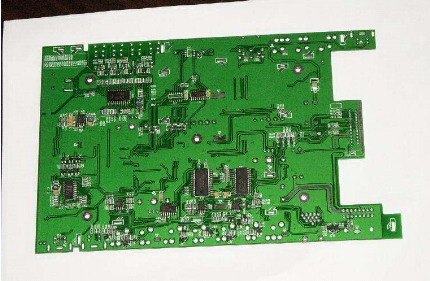With the rapid development of the market and the continuous advancement of technology, PCBA may not be well understood by everyone. Today, I will talk to you about the topic of PCBA. Do you know what are the methods for PCBA to deal with deactivated solder paste? Is there any kind of detection information? Hope to bring useful help to everyone. The following is an introduction to "Processing Measures for Deactivated Solder Paste on PCBA Boards".
PCBA manufacturers tell you how to deal with deactivated solder paste
An effective way to solve the virtual welding is to use a relatively active flux. However, in order to ensure the high insulation and low corrosion of the flux residue after welding, it is required to reduce the content of the active agent as much as possible. This is the long-term restraint that people dare not use. Strong active flux to solve the cause of the false soldering problem. Obviously, it is difficult to balance wettability and corrosion resistance at the same time. Therefore, the traditional method is to seek a compromise between wettability and corrosion resistance.

The purpose of the deactivation solder paste invention is to try to add a certain substance to the solder paste so that it has a medium activity in the period before the peak temperature of the reflow soldering, so as to effectively remove the metal oxides and improve the wettability of the solder. . After passing the furnace, it must be inactivated and become weakly active to ensure the high insulation and low corrosion of the residue.
Generally, the solder paste uses halogen compounds, such as HCL or HBr, as the activating agent. In the initial stage of reflow soldering, the hydrohalic acid formed by the decomposition of heating chemically reacts with the metal oxide to oxidize the metal surface.
When a deactivator is added to the solder paste, the residual halogen acid will react chemically with the flux in the flux at the multi-peak temperature of the reflow flux, and combine to become a new organic compound of carbon and halogen. Completely lose activity.
Lead-free solder paste is a kind of high tin alloy. Compared with the traditional tin-lead eutectic alloy solder paste, the content of tin is more than 1/3 higher. This feature makes the lead-free solder paste surface oxides more difficult to remove, the interface surface tension is greater, and the wettability deteriorates. In order to achieve good soldering, high-tin alloy solder paste must use a strong active flux.
PCBA manufacturers tell you what testing equipment is available in SMT patch processing
1. MVI (manual visual inspection)
2. AOI testing equipment
(1) Where AOI inspection equipment is used: AOI can be used in multiple locations on the production line, and each location can detect special defects, but the AOI inspection equipment should be placed in a position that can identify and correct multiple defects as soon as possible.
(2) Defects that AOI can detect: AOI is generally inspected after the PCB board etching process, mainly to find the missing and redundant parts on it.
3. X-RAY detector
(1) Where the X-RAY detector is used: it can detect all solder joints on the circuit board, including solder joints that are invisible to the naked eye.
(2) Defects that can be detected by X-RAY detector: The defects that can be detected by X-RAY detector are mainly defects such as bridges after welding, voids, excessive solder joints, and small solder joints.
4. ICT testing equipment
(1) ICT use occasions: ICT is oriented to production process control and can measure resistance, capacitance, inductance, and integrated circuits. It is particularly effective for detecting open circuits, short circuits, and component damage, with accurate fault location and convenient maintenance.
(2) Defects that ICT can detect: it can test the problems of virtual welding, open circuit, short circuit, component failure, and wrong material after welding.